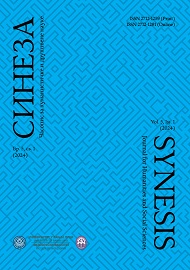Самопроцјене креативности студената у зависности од њиховог пола и нивоа образовања њихових родитеља
Students’ self-assessment of creativity depending on their gender and the level of education of their parents
Author(s): Vesna Cvjetinović, Zlatko M. Pavlović, Sonja KaurinSubject(s): Gender Studies, Education, Higher Education , Family and social welfare, Sociology of Education
Published by: Filozofski fakultet, Univerzitet u Banjoj Luci
Keywords: creativity; self-assessments of creativity; areas of expression of creativity; self-assessments of creativity and gender; self-assessments of creativity and educational level of parents;
Summary/Abstract: In the modern world, there are more and more jobs whose successful performance relies on a creative approach. Because of this, the creativity of people is gaining in importance, and so does the way in which they perceive and evaluate creativity. This paper presents the results of research on the students’ assessments of their own creativity. To a sample of 370 students from several different faculties, we applied the Kaufman K-DOCS scale, which measures self-assessments of creativity in five areas of its manifestation: personal-daily, academic, performance-related, technical-scientific and artistic. The results were analyzed taking into account the gender of the respondents and the educational level of their parents. Fathers’ education as the main effect was the most common, gender as the main effect in respondents was less common, and the interaction between gender of respondents and the educational level of their parents was registered only in one case. According to our results, respondents whose fathers have a higher level of education show increased self-assessments of their creativity in the academic, performance, technical-scientific and artistic fields. The educational level of mothers has not proved to be relevant for the self-assessments of creativity. As for the gender of the respondents, it proved significant in two areas. Male respondents assessed their own creativity more positively in the technical-scientific field, and female respondents did so in the artistic field. In other areas, differences were not registered. The interaction between the gender of the respondents and the educational level of their parents was registered only in the self-assessments in the technical and scientific field, where male respondents whose mothers have a higher level of education had more positive self-assessments of creativity than respondents whose mothers have a lower level of education, while such a tendency in female respondents was not registered.
Journal: Sineza
- Issue Year: 5/2024
- Issue No: 1
- Page Range: 83-106
- Page Count: 24
- Language: Serbian

